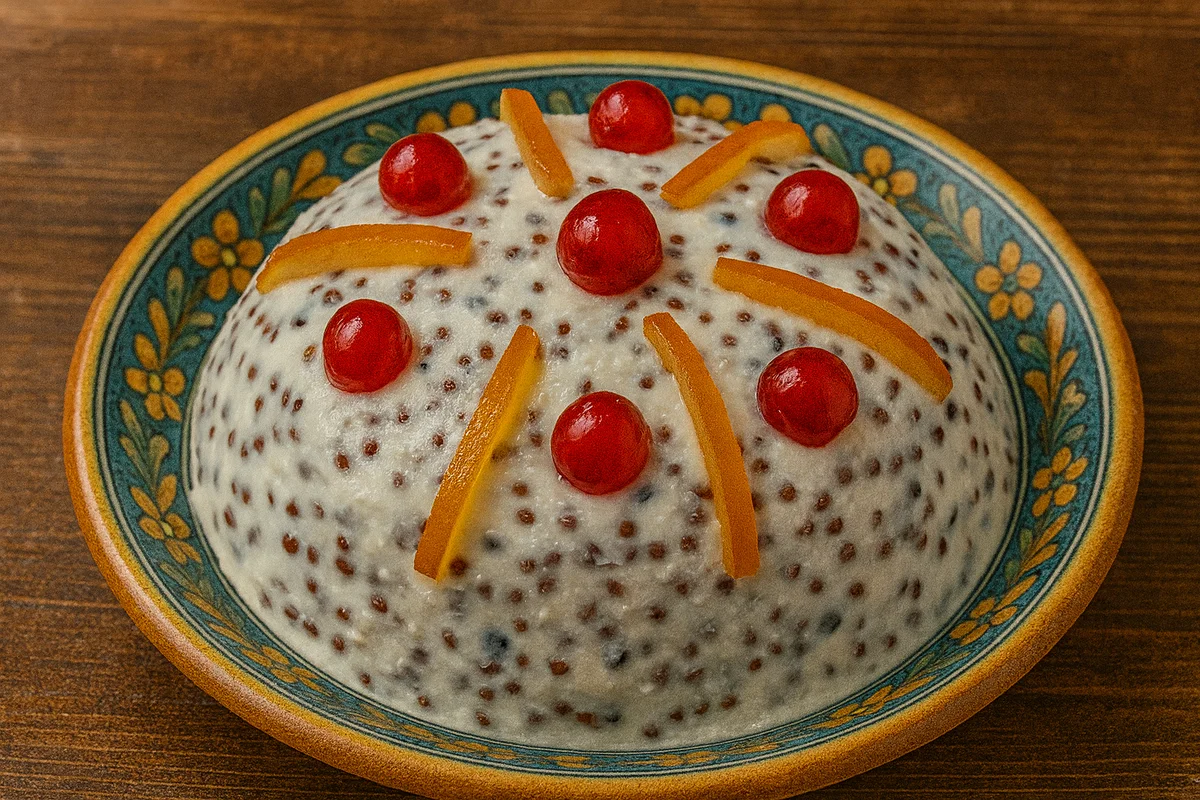The Feast That Illuminates December
In mid-December, as winter shadows settle over Sicily, the island is suddenly lit by the warm, almost golden glow of celebration. The Feast of Santa Lucia, patron saint of sight and protector against darkness, is one of the most emotionally charged days in the Sicilian calendar. Wandering through Palermo’s narrow streets on the early morning of 13 December, I felt that curious blend of reverence and festivity that Sicilians execute so naturally - a hum of anticipation underpinned by the scent of roasted wheat, orange peel, and woodsmoke.
Santa Lucia’s story is woven into Sicily's identity. Born in Syracuse in the 3rd century, she is remembered for her fierce faith and compassion, but also for the miracle that, according to Sicilian tradition, saved the island during a time of famine. It is this miracle that gave birth to cuccìa, the humble yet symbolic dish that defines the day.
Cuccìa: A Bowl Filled With Memory
My first encounter with cuccìa came in a bustling Palermo kitchen, where a grandmotherly cook stirred a vast pot of simmering wheat berries with the tenderness one might reserve for a child. The grains were plump and glossy, swollen from slow soaking and long cooking. “It must soften naturally,” she told me, “as if surrendering its hardness to the day.”
Cuccìa takes many forms across the island - creamy with ricotta in Palermo, enriched with chocolate in the west, or kept simple and sweetened with honey elsewhere. Yet its essence never changes: it is a dish born of gratitude. Legend has it that when Sicily faced a terrible famine, a ship laden with grain docked unexpectedly on 13 December, rescuing the starving population. Rather than milling the grain into flour, people boiled it whole, preparing the very first cuccìa. Today, the dish retains the same symbolic meaning of relief, survival, and the nourishing power of faith.
Eating cuccìa is not simply a culinary act - it feels almost ceremonial. The texture of the wheat, tender yet resilient under the teeth, conjures a sense of ancient continuity. The ricotta lends a luscious creaminess that wraps around each grain like a blessing, while flecks of candied fruit catch the light like tiny, sugary mosaics.
A Day Without Flour
One of the most fascinating aspects of Santa Lucia in Sicily is the island-wide abstention from flour-based foods. No bread, no pasta - a rule that sounds almost unthinkable in a region where flour is a daily hero. Yet the devotion is deep. On this day, Sicilians turn to panelle, arancine, potatoes, vegetables, and of course, cuccìa. It is a reminder of humility and gratitude, echoing that miraculous day when wheat arrived but there was no time to grind it.
As I walked through the markets of Palermo, trays of golden arancine towered like edible sculptures, while stalls overflowed with fried delicacies and steaming bowls of grain. The air was thick with laughter, prayer, frying oil, and the sweet aroma of cinnamon drifting from freshly prepared cuccìa.
The Spirit of Light
Santa Lucia’s feast is not merely a religious observance; it is an expression of Sicilian resilience and community spirit. Even in the deepest days of winter, the celebration radiates brightness. Families gather, candles flicker in windows, and the island pays homage to a saint who symbolises clarity, guidance, and hope.
Standing at the edge of a small piazza in Syracuse, where Lucia's story began, I watched children carrying lanterns as church bells rang through the crisp air. It felt as though the whole island was breathing in unison - a collective exhale of gratitude and remembrance.
A Tradition That Lives On
Cuccìa is more than a dish; it is a story told through flavour. Each spoonful connects past and present, famine and abundance, darkness and illumination. To taste it in Sicily, on the day dedicated to Santa Lucia, is to witness the island’s heart laid bare: humble, generous, fiercely proud of its heritage, and always guided by its own, unwavering inner light.

